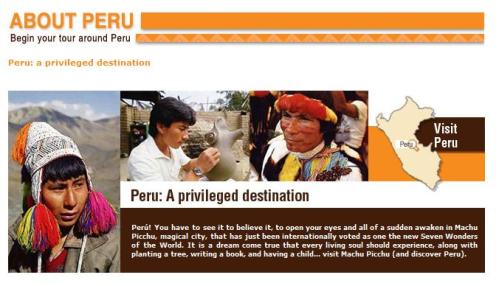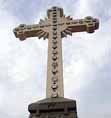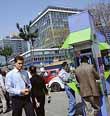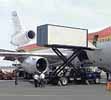Peru Info
Heir to ancient cultures and a rich colonial tradition, Perú is a magical spot which involves one of the richest biodiversities of Earth, and is a melting pot of different cultures who together are forging the promise of a better future.

With an area of 1,285,216 square km, Peru is the third-largest country in South America after Brazil and Argentina, ranking it amongst the world’s 20 largest nations. Peru also holds sway over the sea up to 200 miles from the Peruvian coast and has territorial rights to an area of 60 million hectares in the Antarctic. Lima is the capital of Peru.
 Population
Population29,132,013 inhabitants in 2009. Peru is a nation of mixed ethnic origins. Throughout its history, Peru has been the meeting ground for different nations and cultures. The indigenous population was joined 500 years ago by the Spaniards.
 Language
LanguageAs part of its rich cultural tradition, Peru features many different languages. Although Spanish is commonly spoken across the country, Quechua is a major legacy of the Inca empire, and is still spoken with regional dialects in many parts of Peru. In addition, other languages are spoken such as Aymara and a variety of dialects in the Amazon jungle, which are divided up into 15 linguistic families and 43 different languages.
 Currency
CurrencyThe official currency in Peru is the Nuevo Sol (S/.), which is divided into 100 centimos. The currency includes coins for 5, 10, 20 and 50 centimos and 1, 2 and 5 sol coins. There are bills in the denomination of 10, 20, 50, 100 and 200 Nuevos Soles.
 Government
GovernmentPeru is a democratic republic. The president and members of Congress are elected every five years by universal suffrage. The current constitutional president of Peru is Alan Garcia Pérez (2006-2011).
 Religion
ReligionPeru is a naturally religious country: a diversity of beliefs and freedom of worship can be seen from the wide range of festivals and rituals that feature both Catholic fervor and the mysticism of age-old pre-Hispanic cultures.
 Telephone
TelephonePeru features a far-reaching telephone network that provides services for national and international long-distance calls from private telephone lines and public cabins. There are also currently 1.3 million clients who have cellular phones, and satellite communications are currently being developed.
 Internet / Email
Internet / EmailA number of service providers across the country has given the public access to Internet. Known in Peru as Cabinas Internet, the average cost of an hour’s connection is S/.3,50 (US$1).
 Airports
Airports14 airports equipped to receive commercial flights and 10 ready for international flights: Lima, Arequipa, Chiclayo, Pisco, Pucallpa,Iquitos, Cusco, Trujillo, Tacna and Juliaca. 17 airlines operating international flights and 7 airline companies offering domestic flights.
 Ports
PortsPeru’s largest port is Callao, outside Lima. Other major ports include Paita, Salaverry, Chimbote, Callao, Pisco, Ilo and Matarani.


No comments:
Post a Comment